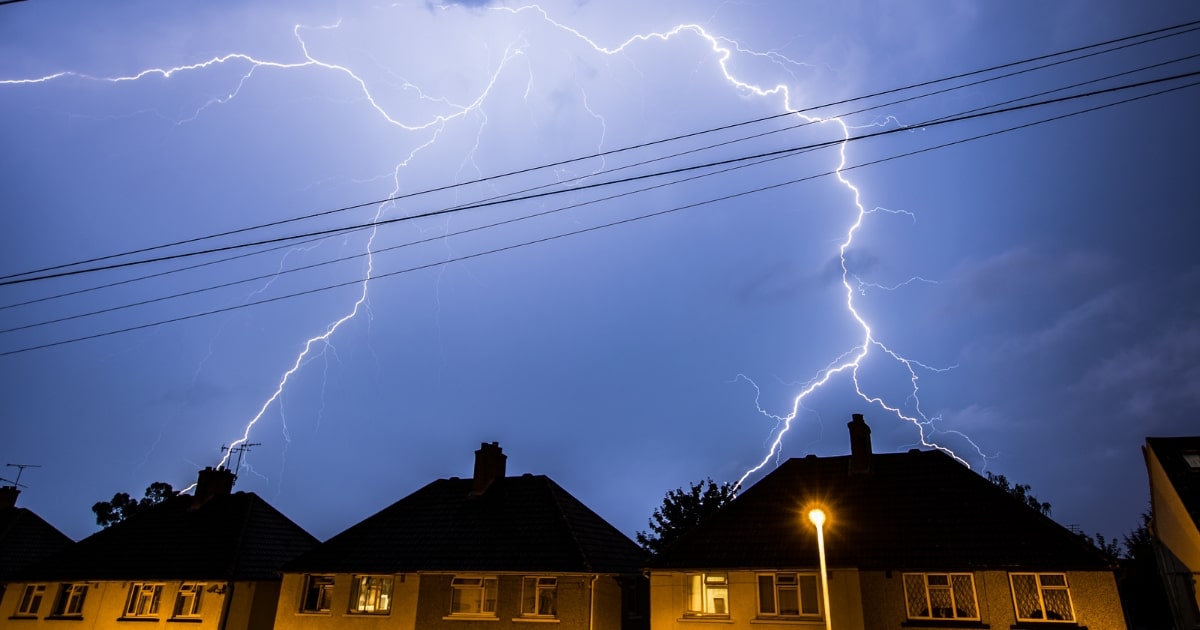Although it may sound like an urban legend, it turns out that using any plumbing during a thunderstorm is actually a very bad idea. Doing the dishes, washing your hands, or showering during a storm can be hazardous. If your home or plumbing isn’t properly grounded, electricity from a lightning strike can travel through pipes and water, shocking you.

It may not seem likely, but being struck by lightning is always a possibility. Approximately 10% of lightning victims die. According to the Centers for Disease Control and Prevention (CDC), lightning caused an average of 35 deaths each year between 2003 and 2012. During a thunderstorm, routine daily actions like dishwashing or showering can raise your risk of a lightning strike.
John Jensenius, lightning safety specialist for the National Weather Service (NWS) issued a warning to stay away from plumbing or metal objects during a thunderstorm.
Why it’s dangerous to run water during a storm
Water and metal (like some pipes) both conduct electricity. When lightning strikes a house, electricity moves fast through conductive materials like metal pipes. Since you can’t predict whether or not lightning will actually reach your pipes, you shouldn’t take the chance.
Jensenius explained, “You just want to stay away from things that conduct electricity within the home. That would include both the wires and the plumbing, so in that particular case certainly, washing dishes or showering during a storm. Just avoid those any time you can hear thunder.”
Anything plugged into the wall, such as a dishwasher or washing machine, or linked to pipes, becomes unsafe.
“If you’re at all connected to … anything that plugs into the wall, which could be, for example, a dishwasher or a washing machine that’s plugged into the wall or also has connections to plumbing, that becomes dangerous,” Jensenius said.
Lightning can strike up to ten kilometers away from a storm. So, if you hear thunder or near a storm, you should seek shelter. A safe place is indoors, away from metal, plumbing, electrical devices, concrete, with windows and doors. Dog houses, dugouts, and picnic shelters are unsafe. With the windows up, a car with a metal top is safe.
Jensenius also clarified that using plastic pipes does not lower the risks. He explained that water also conducts electricity. When lightning strikes something and there are puddles around it, it can easily electrocute someone close.
How do I know when it’s safe to use water during bad weather?
The NWS cautions if you hear thunder, don’t turn on your water. Never run the water until you no longer hear thunder. After a storm, wait 30 minutes before using the sink or shower or until the storm passes.
Home grounding changes can also make your home safer. Instead of being grounded to the plumbing, an electrician can make sure your system is grounded to soil-based rods.
What to prepare during a thunderstorm
The CDC listed a few things we should prepare during a thunderstorm:
1. An emergency food, water and medicine supply.
2. Safety and personal items
3. A fire extinguisher.
4. Emergency power sources such as flashlights. Make sure to check if batteries are still usable.





